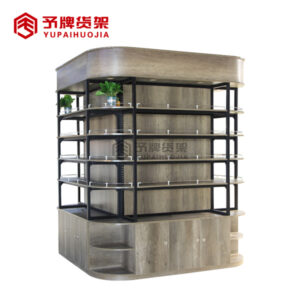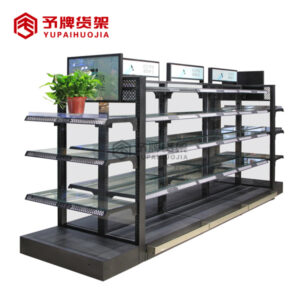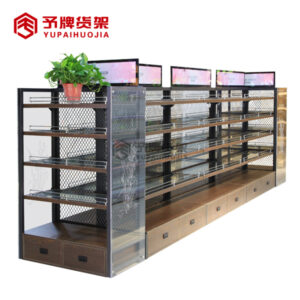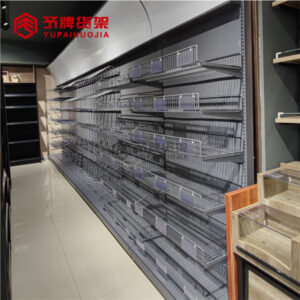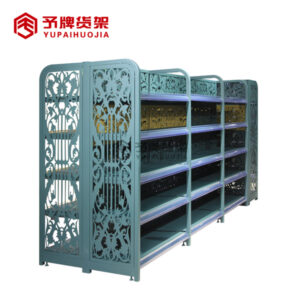Supermarkets use a variety of placement techniques to get you to buy more. The end result is an increase in profits for the store. Here are 7 different places where supermarket shelves are placed in order that can manipulate your shopping experience.
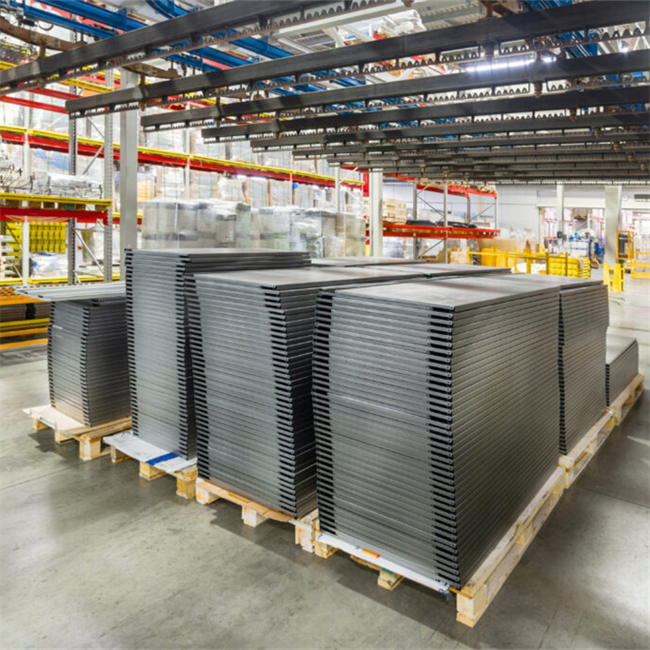
Types of supermarket shelves
There are four main types of supermarket shelves that supermarkets use to make you spend more money: end caps, gondolas, racks, and impulse buys.
End caps are the supermarket shelves at the end of an aisle that usually feature special deals or new products. Gondolas are the long, central shelves in the middle of an aisle. Racks are smaller supermarket shelves placed near checkouts or in high-traffic areas. Impulse buys are items placed near the entrance/exit or in strategic locations throughout the store that are designed to get you to buy on a whim.
Supermarkets use these different types of supermarket shelves to place items in strategic locations that will make you more likely to see them and buy them. They also use shelf talkers (small signs placed on supermarket shelves) to highlight special deals or items they want you to buy. By understanding how supermarkets use shelving to their advantage, you can be a smarter shopper and avoid overspending on impulse purchases.
Why Supermarkets Use These Techniques
There are a few reasons supermarkets use these techniques. First, they want to make sure you see the items that are on sale or that they want to promote. By placing them at eye level or at the end of an aisle, they know you’ll see them and (hopefully) be tempted to buy them.
Second, they want to make it easy for you to find the items you need so you’ll keep coming back. If the things you need are always in the same place, you’re less likely to go to another store that might be cheaper or have better sales.
Finally, they want to control how much time you spend in the store. The longer you stay, the more likely you are to impulse buy something else
Supermarkets use a variety of techniques to get customers to spend more money. One common technique is placing items on sale at eye level or at the end of an aisle. This ensures that customers will see the item and hopefully be tempted to buy it. Another common technique is controlling how long customers spend in the store by making it easy for them to find what they need. This keeps customers coming back and also increases the chance that they will impulse buy something else while they are in the store.
-
 Steel stationery shop display rack for sale
Steel stationery shop display rack for sale -
 Supermarket shelves for sale in dubai
Supermarket shelves for sale in dubai -
 Pharmacy grocery display for sale
Pharmacy grocery display for sale -
 Cosmetic display shelves for shop
Cosmetic display shelves for shop -
 wholesale cosmetic display rack
wholesale cosmetic display rack -
 Supermarket Cosmetics shelves supplier
Supermarket Cosmetics shelves supplier -
 kitchenware store shelves for sale
kitchenware store shelves for sale -
 Adjustable Steel Modern Shelf Steel Shelves Grocery Shelf Mini Store
Adjustable Steel Modern Shelf Steel Shelves Grocery Shelf Mini Store -
 4 post retail shop racking display grocery item display rack supermarket shelf gondola
4 post retail shop racking display grocery item display rack supermarket shelf gondola
How to Shop Smarter
- How to Shop Smarter
If you’re like most people, you probably do the majority of your grocery shopping at the supermarket. And if you’re like most people, you probably don’t give much thought to how the supermarket is laid out and where each item is placed on the supermarket shelves. But the truth is, the layout of the supermarket can have a big impact on how much money you spend – and not in a good way.
Here are a few tips on how to shop smarter at the supermarket:
1) Be aware of eye-level shelving: Most supermarkets place items that they want to sell more of on eye-level supermarket shelves. So, if you’re looking for a bargain, be sure to check the supermarket shelves below and above eye level as well.
2) Don’t get sucked in by end caps: Items placed on end caps (at the ends of aisles) are often full price or marked up slightly compared to items elsewhere in the store. If you can help it, try to avoid buying items from end caps.
3) Stick to the perimeter: The perimeter of most supermarkets is where you’ll find fresh produce, meat, and dairy – all healthy staples that should make up the bulk of your grocery list. The inner aisles are typically filled with less-healthy processed foods. So, next time you’re at the supermarket, try sticking to just the perimeter and see how much money you save.
How to Win the Marketing Game
There’s a reason why supermarkets are designed the way they are. From the moment you walk in, you’re bombarded with sights and smells that trigger your appetite and make you want to buy more. The layout of the store is also carefully planned to make it easy for you to find what you need – and spend more money while you’re at it.
Here are some of the clever tricks supermarkets use to get you to spend more:
- They place the most popular items at eye level.
- They stock up on seasonal produce.
- They put essential items at the back of the store.
- They offer discounts and coupons on high-demand items.
- They use special sales techniques, like BOGO deals (buy one, get one free).


